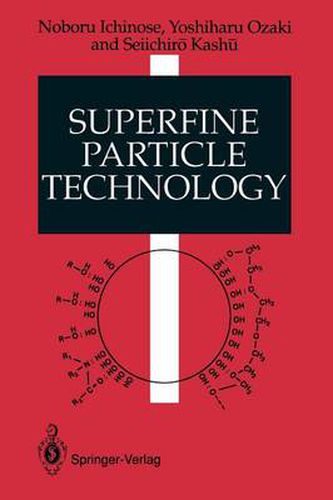Readings Newsletter
Become a Readings Member to make your shopping experience even easier.
Sign in or sign up for free!
You’re not far away from qualifying for FREE standard shipping within Australia
You’ve qualified for FREE standard shipping within Australia
The cart is loading…






This title is printed to order. This book may have been self-published. If so, we cannot guarantee the quality of the content. In the main most books will have gone through the editing process however some may not. We therefore suggest that you be aware of this before ordering this book. If in doubt check either the author or publisher’s details as we are unable to accept any returns unless they are faulty. Please contact us if you have any questions.
If a substance is repeatedly subdivided, the result is what are known as microscopic particles . These particles are distinguished from the solid mass which they originally formed by the size of the surface area per unit weight. This simple difference holds true down to a certain lower size limit, and when this limit is exceeded, a new state of matter is reached, in which the behavior of the particles is quite different to that of the original solid. Particles in this state are termed superfine particles , and are distinct from ordinary particles. The size of the superfine particles, that is to say the size limit below which particle behavior is completely different from the behavior of the original solid, varies a good deal depending on the physical properties of the substance in question. Properties such as magnetism and electrical resistance are closely related to the internal structural properties of the particles themselves, such as the magnetization processes of their respective magnetic domains, and the mean free path of charged bodies. This internal structure therefore limits the size of the superfine particles. In ceramic processing, on the other hand, the surface area of the particles themselves becomes an even more important factor than their internal structure. In this case, the size of the superfine particles is determined by the interaction between water and solvents on the surface of the particles.
$9.00 standard shipping within Australia
FREE standard shipping within Australia for orders over $100.00
Express & International shipping calculated at checkout
This title is printed to order. This book may have been self-published. If so, we cannot guarantee the quality of the content. In the main most books will have gone through the editing process however some may not. We therefore suggest that you be aware of this before ordering this book. If in doubt check either the author or publisher’s details as we are unable to accept any returns unless they are faulty. Please contact us if you have any questions.
If a substance is repeatedly subdivided, the result is what are known as microscopic particles . These particles are distinguished from the solid mass which they originally formed by the size of the surface area per unit weight. This simple difference holds true down to a certain lower size limit, and when this limit is exceeded, a new state of matter is reached, in which the behavior of the particles is quite different to that of the original solid. Particles in this state are termed superfine particles , and are distinct from ordinary particles. The size of the superfine particles, that is to say the size limit below which particle behavior is completely different from the behavior of the original solid, varies a good deal depending on the physical properties of the substance in question. Properties such as magnetism and electrical resistance are closely related to the internal structural properties of the particles themselves, such as the magnetization processes of their respective magnetic domains, and the mean free path of charged bodies. This internal structure therefore limits the size of the superfine particles. In ceramic processing, on the other hand, the surface area of the particles themselves becomes an even more important factor than their internal structure. In this case, the size of the superfine particles is determined by the interaction between water and solvents on the surface of the particles.